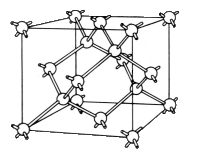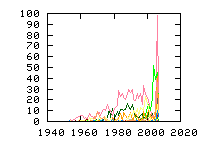« Previous
1
Next »
(5 hits, 1/1)
Showing
10, 25, 50, 100, 500, 1000, all papers per page.
Sort by:
last publication date,
older publication date,
last update date.
- 1. J. Magn. Magn. Mater. 302, 118 (2005) , “Magnetism origin of Mn-doped ZnO nanoclusters”, J.H. Li, D.Z. Shen, J.Y. Zhang, D.X. Zhao, B.S. Li, Y.M. Lu, Y.C. Liu , X.W. FanZnMnO nanoclusters were synthesized by the sol–gel method. The structural and magnetic characters were investigated. The XRD spectrum shows ZnMnO nanoclusters are hexagonal wurtzite structures and a small quantity of ZnMn2O4 phase is also present in the spectrum. The percentages of Zn and Mn... (Read more)
- 2. J. Cryst. Growth 264, 1-6 (2004) , “Ammonolysis of Ga2O3 and its application to the sublimation source for the growth of GaN film”, Y. J. Park , C. S. Oh , T. H. Yeom, Y. M. YuWe have observed the nagnetic resonance of conduction electrons in n-type indium antimonide, by the "heating" of the electron kinetic-energy temperature via the slsctron spins. This is the first direct evidence suggesting a contribution of spin-orbit coupling to relaxation in this system. In a steady-state spin-resonance experiment, a power PS=(M0=MZ)H/T1 is transferred to the systems(reservoirs) towards which the spins relax. Here, M0 is the equilibrium magnetization, MZ the component of the magnetization along the magnetic field H, and T1 the relaxation time. The reservoir of interest in our case is the kinetic energy of the eledtrons, and this is detected by an increase in the mobility μ. To our knowledge. this is the first observation of the power flow, due to relaxation, from the spins to a reservoir,applied to the ditection of magnetic resonance of conduction-electron spins. It differs in principle from usual spin-resonance observation methods, which are based on electromagnetic interactions of the spin system, such as the voltage induced in a resonator by the rotating magnetic moment, or again such as power absorption PS=MyHx from the rotating field Hx by the out-of- phase component My.Besides providing information on the relaxation mechanism, the present method (that we call "ralaxation" method) should also in some cases by much more sensitive than the usual "electromagnetic" detection methods. (Read more)
- 3. J. Phys. Chem. Solids 64, 1027-1035 (2003) , “Optical absorption and fluorescence properties of Er3+ ion in MO–WO3–P2O5 glasses”, P. Subbalakshmi , N. VeeraiahTungsten phosphate glasses mixed with the three different modifier oxides, viz. PbO, ZnO and CaO doped with Er2O3 were prepared. The glasses were characterised by X-ray diffraction spectra, electron microscopy and differential thermal analysis. Optical absorption and photoluminescence spectra of... (Read more)
- 4. Mater. Sci. Eng. A 332, 356-361 (2002) , “The preparation and characterization of ZnO ultrafine particles”, Liqiang Jing, Zili Xu, Jing Shang, Xiaojun Sun, Weimin Cai and Haichen GuoIn this paper, ZnO ultrafine particles (UFPs) were prepared by the thermal decomposition method of the precursor, zinc carbonate hydroxide. The structure and properties of the as-prepared ZnO UFPs were studied using TEM, XRD, BET, SPS, ESR, Raman, XPS and UV–Vis absorption spectroscopy. It... (Read more)
- 5. Appl. Surf. Sci. 180, 308-314 (2001) , “The surface properties and photocatalytic activities of ZnO ultrafine particles”, Liqiang Jing, Zili Xu, Xiaojun Sun, Jing Shang and Weimin CaiWe prepared ZnO ultrafine particles (UFPs) by thermal decomposition of the precursor zinc carbonate hydroxide. The surface properties of the as-prepared particles were studied using TEM, XRD, BET, SPS, EPR, IR, and XPS. The surface contains active species such as oxygen deficiencies and hydroxyl... (Read more)
« Previous
1
Next »
(5 hits, 1/1)
Showing
10, 25, 50, 100, 500, 1000, all papers per page.
Sort by:
last publication date,
older publication date,
last update date.
All papers (3399)
Updated at 2010-07-20 16:50:39
Updated at 2010-07-20 16:50:39
(view as: tree
,
cloud
)
| 1329 | untagged |
Materials
(111 tags)
Others(101 tags)
Technique
(46 tags)
Details
(591 tags)
Bond(35 tags)
Defect(interstitial)(18 tags)
Defect(vacancy)(15 tags)
Defect-type(19 tags)
Element(65 tags)
Energy(8 tags)
Isotope(56 tags)
Label(303 tags)
Sample(17 tags)
Spin(8 tags)
Symmetry(15 tags)

